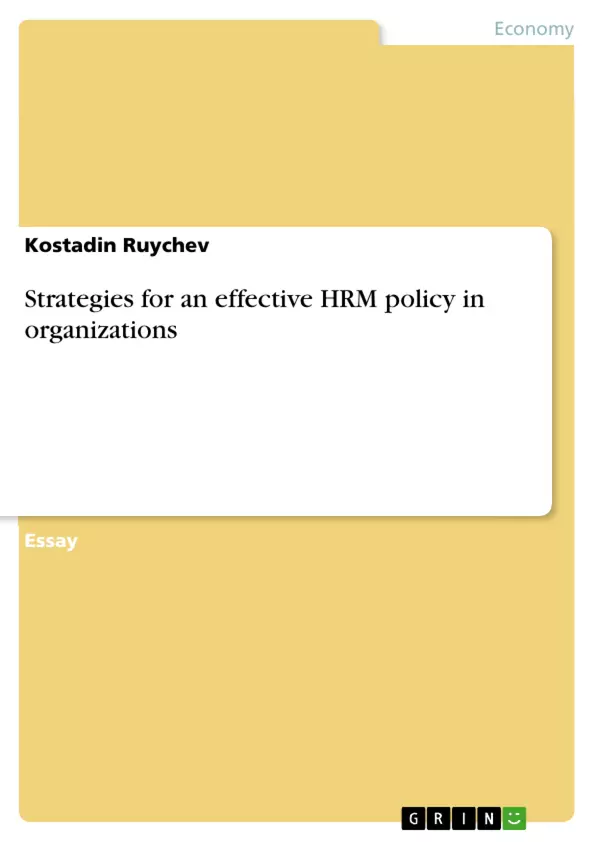This paper examines the delivery of strategic effect to organizations by effective HRM policy and the contribution to competitive advantage, with a focus on the influence of the internal and external factors on the delivery of HRM policy in the UK during the last 25 years.
HR function in companies is ruled along with the overall strategy of the company, so as to set up the best match between the organization, the employees and its surrounding environment. The latter is known as vertical or horizontal alignment and demands coordination of organizational aims and processes with needs of the staff in an orderly and efficient way. Doing so will guarantee different training, development and learning opportunities for the organizations’ employees. Hence, companies will be more likely to gain competitive advantage and there is a strong tendency that the performance of the organization as well as the relation between the employees and the organization will ameliorate.
Inhaltsverzeichnis (Table of Contents)
- Delivery of Strategic Effect to Organizations by Effective HRM Policy and Contribution to Competitive Advantage
- Strategic Human Resources Management
- Competitive Advantage
- Human Resource Development
- Workforce Planning
- Recruitment Process
- Employee Development
- Reward Programmes
- Health and Safety Policy
- HRM Strategies
- Influence of the Internal and External Factors on the Delivery of HRM Policy in the UK during the Last 25 Years
- Changes of Legislation
- Economic Factors
- Technological Factors
- Social Factors
Zielsetzung und Themenschwerpunkte (Objectives and Key Themes)
This paper analyzes the impact of effective HRM policy on delivering strategic effects to organizations and its contribution to achieving a competitive advantage. The paper examines how internal and external factors have shaped the delivery of HRM policy in the UK over the past 25 years.
- The role of HRM policy in achieving organizational objectives
- The impact of internal and external factors on HRM policy
- The challenges and opportunities associated with delivering effective HRM policy
- The relationship between HRM and competitive advantage
- The evolution of HRM practices in the UK
Zusammenfassung der Kapitel (Chapter Summaries)
- Delivery of Strategic Effect to Organizations by Effective HRM Policy and Contribution to Competitive Advantage: This chapter explores the concept of strategic HRM and its importance in achieving organizational goals and competitive advantage. It discusses various HRM practices, including workforce planning, recruitment, development, reward systems, and health and safety policies, and their contributions to organizational success.
- Influence of the Internal and External Factors on the Delivery of HRM Policy in the UK during the Last 25 Years: This chapter delves into the influence of internal and external factors on the delivery of HRM policy in the UK. It examines the impact of changes in legislation, economic conditions, technological advancements, and social factors on HRM practices. The chapter also highlights the challenges and opportunities presented by these factors.
Schlüsselwörter (Keywords)
The primary keywords and focus topics of this text include strategic human resource management, competitive advantage, HRM policy, internal and external factors, legislative changes, economic factors, technological factors, social factors, UK, and organizational performance.
- Quote paper
- Kostadin Ruychev (Author), 2018, Strategies for an effective HRM policy in organizations, Munich, GRIN Verlag, https://www.grin.com/document/459726



